#Java macaque monkey
Explore tagged Tumblr posts
Text
Java Macaque Monkeys from Prety Exotic (USA & Canada Supplier)
Java Macaque Monkeys for Sale in USA and Canada – From Prety Exotic
Java macaques are intelligent, social primates with unique personalities. Whether you’re a collector, breeder, or exotic pet enthusiast, finding a trustworthy source is essential.
Prety Exotic stands out as a leading supplier in the USA and Canada. This guide will cover everything you need to know — from what makes Java macaques special to how you can buy one safely and responsibly.
What is a Java Macaque Monkey?
The Java macaque, also known as Macaca fascicularis, originates from Southeast Asia. It’s a medium-sized monkey with expressive eyes and a long tail. Adults weigh between 6 to 15 pounds and live up to 30 years in captivity.
They’re highly intelligent and display complex social behaviors. Unlike some monkeys, Java macaques can bond closely with humans.
Their agility and energy levels make them engaging companions, but also require attentive care. Due to their cognitive needs, they need enrichment toys, interaction, and space to move freely.
These monkeys are often mistaken for other macaque species, but Java macaques have distinct grey-brown fur and prominent facial expressions. They’re frequently used in research due to their adaptability, but also valued as exotic pets where legal.
Why Java Macaques Make Unique Exotic Pets
Owning a Java macaque is unlike owning any other exotic animal. They form deep bonds with their handlers and respond to voice and gestures.
Some key traits include:
High problem-solving abilities
Strong social bonding
Grooming behaviors
Playful, curious nature
Java macaques thrive with routine and structured environments. When raised with care, they can be affectionate and responsive.
However, they're not low-maintenance pets. Their intelligence can lead to mischief if unstimulated.
Owners must be prepared for a long-term commitment. These monkeys are best suited to experienced owners or facilities with space and enrichment resources.
Prety Exotic – Trusted Source for Java Macaque Monkeys
Prety Exotic is a leading U.S.-based exotic animal supplier with a strong reputation in both the U.S. and Canada. They specialize in healthy, ethically sourced Java macaques.
All animals come with health certifications and are raised in controlled environments. Their customer support helps new buyers with setup, feeding, and care education.
Website Overview and Purchasing Info
To purchase, visit Prety Exotic’s official Java macaque page. Each listing includes detailed information about the monkey’s age, health, and temperament.
Features include:
Secure payment options
Live support
Verified testimonials
Updated inventory
Orders can be placed online, with guidance available throughout the process.
Shipping and Availability
Prety Exotic ships across most of the USA and Canada. Delivery is arranged through licensed animal handlers to ensure safety.
Shipping includes:
Travel crate
Health documentation
Feeding starter kits
Availability may vary by state or province due to legal restrictions. Contact customer support for the latest delivery eligibility.
Legal and Ethical Considerations
Before buying, check local laws regarding primate ownership. In the U.S., states like Florida and Texas allow ownership with permits, while others ban it entirely.
Canada’s laws also vary by province. Always verify with your local wildlife authority.
Ethically, it’s vital to buy from reputable breeders like Prety Exotic, who prioritize animal welfare. Avoid illegal imports or unlicensed sellers.
Respectful ownership includes:
Long-term care planning
Access to veterinary services
Providing mental stimulation
Irresponsible ownership can lead to stressed, aggressive monkeys and legal issues.
Caring for Your Java Macaque Monkey
Owning a Java macaque is a full-time responsibility. They require a secure environment, a balanced diet, and regular interaction.
Diet and Habitat Needs
Java macaques eat fruits, vegetables, and specially formulated primate chow. Fresh water must be available at all times.
Key habitat features:
Indoor and outdoor space
Climbing structures
Daily cleaning routine
Temperature regulation
Avoid sugary foods and processed snacks. A proper diet supports mood, behavior, and overall health.
Behavior and Socialization
Macaques are naturally social animals. They groom, play, and build bonds through consistent interaction.
Tips for socializing:
Introduce new toys weekly
Use verbal commands consistently
Reward positive behaviors with treats
Avoid isolation. A lonely macaque may become anxious or aggressive.
Is a Java Macaque Right for You?
Before purchasing, assess your lifestyle, time, and resources. Ask yourself:
Can I commit 20+ years to care?
Do I have legal clearance in my area?
Is my home suitable for a primate?
Can I afford food, vet care, and enrichment?
Java macaques are not for casual pet owners. They require structure, patience, and ongoing education.
However, for the right person, they can be deeply rewarding companions.
Final Thoughts and How to Get Started
If you’re ready and legally allowed to own a Java macaque, Prety Exotic is the top choice for a safe, ethical purchase. They offer quality animals, reliable support, and secure delivery options.
Visit the product page to see available monkeys: 👉 https://pretyexotic.com/product/java-macaque-monkeys/
Start your journey with confidence, backed by a trusted supplier.
#Java macaque monkey#Java monkey for sale#macaque monkey USA#exotic monkey Canada#Prety Exotic monkeys#buy Java macaque monkey in the USA#Java macaque monkey for sale in Canada#best place to buy exotic monkeys online#Prety Exotic Java monkey pricing#how to care for Java macaque monkeys
1 note
·
View note
Note
Were on this earth did you get the Shimeji Monkey King and macaque?????!!!!!! 🤯🤯😲🤯🤯😯😲🤯
the person is originally on patreon but their name is BeaWatchumean that made the beautiful lil guys! you need Java, something to extract files (I use WinRAR), and the zip from the post they had for the shimejis. here are the links to everything I downloaded: https://www.win-rar.com/postdownload.html?&L=0
https://www.java.com/en/
but once you have java you'll need to download it by going to your files and clicking on it and stuff. right click the zip for extract files, click on the shadowpeach files until you find the shimeji-ee.jar and double click on it and it shoouuuld work :D make sure the shimeji-ee.jar has the java icon with it as well
27 notes
·
View notes
Text
On the border between Sunda and Australasia there’s an archipelago formed from what once were the islands of Sulawesi, Bali, Timor, Flores and Sumba. Although really close to both Australia, Borneo and Java, there hasn’t yet been any major influx of foreign fauna from either landmass towards the archipelago, thus letting the ecosystems on Wallacea become fairly unique.
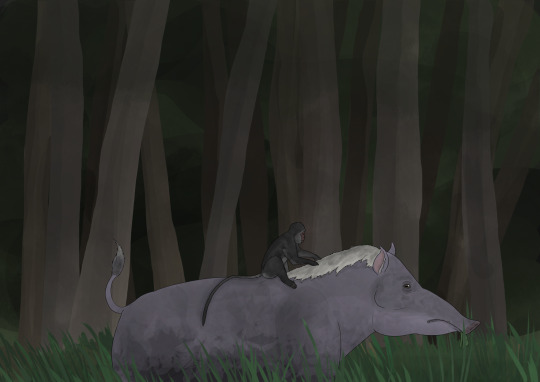
Some of the most abundant inhabitants of the islands are monkeys, particularly macaques, that have evolved a much higher diversity than their Holocene counterparts, with some smaller species even evolving an interesting symbiosis with other, usually large and herbivorous, animals, grooming and ridding them of parasites in exchange for protection.
The most common symbionts of these macaques, and also the most common and widespread herbivores on Wallacea, are pigs, that evolved from two main lineages: the Vittatus lineage, which gave rise to a clade of large bodied fully herbivorous pigs, the giant hogs, that currently only has a handful of species on the different islands of the archipelago, and the Celebensis lineage, from which small peccary like forms, that retained a more omnivorous diet, evolved, the lesser swines, with a much higher diversity across the isles.

What really sets these islands apart, tho, are the predators, that evolved from the only native carnivoran of Sulawesi, the Sulawesi palm civet. They’ve evolved into many forms, with the most derived being weirdly convergent with fossas and big cats, evolving a deeper and shorter skull, and even the ability to grapple prey with their forelimbs.
#spec evo#spec bio#speculative evolution#speculative biology#worldbuilding#artwork#digital art#epigene period#future earth#future evolution
21 notes
·
View notes
Text
For #InternationalGibbonDay:



Sesson Shūkei 雪村周継 (c. 1504 – c. 1589) Gibbons in a Landscape Japan, Muromachi Period, c. 1570 Pair of six-panel screens, each 157.5 x 348 cm Monochrome ink on paper The Metropolitan Museum of Art, New York
Gibbons aren't native to Japan; the iconography was adopted into Japanese art through Chinese art, especially the paintings of Muqi Fachang (f. 13th century) and the popular Zen motif of a gibbon grasping at the reflection of the moon in the water.

This entry in a 19th century Japanese book reports what may have been the first live gibbon exhibited in Japan, in 1809. Likely brought by a Dutch ship; said to be from Java and referred to as "wau-wau," a name for the Silvery Gibbon (Hylobates moloch).
The book is _Kenkadō-zatsuroku_ by Kimura Kenkadō (1736-1802), 1856; drawing by Mori Sosen (1747-1821), a famous Japanese monkey painter.
Text translated as follows:
"In the winter of the sixth year of the Bunko era (1809), a gibbon was shown in Osaka, in the Dōtombori ward. Although we have heard the word 'gibbon' since olden times, and seen pictures of him, we never had seen a live specimen, and therefore a large crowd assembled to see this gibbon. Generally he resembled a large macaque, and figure and fur are very similar. The face is black the fur grey with a touch of brown. The Hollander 'Captain' Hendrik Doeff who was then staying here said that this gibbon occurs on the island of Java where it is called 'wau-wau'. Truly an extraordinary sight!"
#animals in art#animal holiday#illustration#Japanese art#East Asian art#Asian art#16th century art#19th century art#book art#monochrome#screen art#Metropolitan Museum of Art New York#Sesson Shūkei#Gibbon Day#International Gibbon Day#primates#ID
46 notes
·
View notes
Text
Ujung Kulon National Park: Indonesia’s Hidden Wilderness Gem
Ujung Kulon National Park: Indonesia’s Hidden Wilderness Gem
Tucked away at the western tip of Java Island lies Ujung Kulon National Park, a spectacular Javan Rhino haven of biodiversity and natural beauty. This national park is a sanctuary for rare wildlife, a landscape shaped by ancient volcanic eruptions, and a paradise for adventurers looking to reconnect with the wild.
Spanning lush tropical forests, clear rivers, mangrove swamps, and serene coastlines, Ujung Kulon is one of Indonesia's most prized ecological treasures. It is ujung kulon national park a place where nature thrives in its most untouched form.
A Safe Haven for the Javan Rhino
Ujung Kulon National Park is perhaps best known as the last refuge of the Javan rhinoceros, one of the rarest mammals on Earth. With an estimated population of fewer than one hundred individuals, these shy and solitary animals live exclusively in this protected forest. Their survival in Ujung Kulon symbolizes the importance of conservation efforts and the park's vital role in biodiversity preservation.
Though sightings of the rhino are incredibly rare, visitors are often struck by the knowledge that these creatures quietly roam the dense forests nearby, shielded from the outside world.
A Rich Ecosystem of Flora and Fauna
Beyond the Javan rhino, Ujung Kulon supports a rich variety of wildlife. The park is home to leopards, banteng (wild cattle), deer, macaques, crocodiles, monitor lizards, and over 270 species of birds. Its diverse habitats—from rainforest to marine ecosystems—make it an ideal location for both land and aquatic species.
The plant life is just as diverse, with thousands of species of trees, shrubs, and medicinal plants flourishing within the protected boundaries of the park.
Peucang Island and Marine Beauty
Just off the coast of Ujung Kulon lies Peucang Island, a favorite among visitors. With its soft white beaches, coral reefs, and crystal-clear waters, the island offers peaceful retreat and thrilling exploration. Wildlife on Peucang is bold and visible—monkeys swing from the trees, deer roam freely, and brightly colored fish dance through the reefs offshore.
Visitors can enjoy snorkeling, swimming, and hiking on the island, as well as observing animals in their natural habitat.
Adventure Through the Jungle
Ujung Kulon is a dream destination for adventurers and nature lovers. Trekking trails lead deep into dense jungle, along rivers, and past hidden waterfalls. Canoeing through mangroves, camping under the stars, and observing wildlife in silence are all part of the immersive experience.
For those interested in geology, the park also features remnants of the massive Krakatoa eruption of 1883, which reshaped the surrounding landscape and left a historical imprint on the region.
Cultural Significance and Human Connection
Though remote, the area around Ujung Kulon has been touched by human presence for centuries. There are traces of ancient villages, traditional fishing communities, and oral histories that speak of volcanic eruptions and ocean spirits. Local people still live in harmony with nature, using sustainable practices that help protect the fragile balance of the ecosystem.
0 notes
Text
There’s a MONKEY on Craigslist
#WHAT#says 'java macaque'#which google says is probably a crab-eating macaque?#WHY DO THEY HAVE A MONKEY#she's 1 year old and they're trying to ask $5000 for her#WHY DO YOU HAVE A MONKEY#WHY DID YOU PUT IT ON CRAIGSLIST
27 notes
·
View notes
Photo

The Sad Clown by Joan de la Malla, Spain
Timbul, a young long-tailed macaque, puts his hand to his face to try to relieve the discomfort of the mask he has to wear. His owner is training him to stand upright so that he can add more stunts to his repertoire (Badut on his hat means clown). Macaque street shows are banned in several cities, but still take place in Indonesia. Joan spent a long time gaining the trust of the monkey owners in Surabaya, Java. ‘They are not bad people,’ he says, ‘They just need other opportunities to make a living.’
15 notes
·
View notes
Text
What Things Do Jacksonville, NC
Jacksonville, North Carolina, is a trivial yet sprightly town, best known as the adobe of the prevalent Marine Corps base on America’s eastern seaboard. Jacksonville also relishes some stunning beaches. The town played a stimulating role during the Civil War, and the great place to cram about it is at the CSS Neuse Civil War Interpretive Center says Brent Emerson North Carolina.

Lejeune Memorial Gardens has numerous memorials to the Americans who have dropped in dissimilar fights around the world. If you are wandering with kids, take them to explore the wild animals at the zoo. Here are a few things you can do in Jacksonville, North Carolina:
Lynnwood Park Zoo
It is an animal park that feasts over 10 acres of land, with a half-acre pond and a famed picnic area. Established in 1990, the zoo is the only park of its kind in the city and features more than 80 animal demonstrations, with a huge range of species such as reptiles, mammals, birds, and others.
Some of the most prevalent mammals are zebra, grey fox, pygmy goat, grivet monkey, Java and rhesus macaques, and many others. The reptile show comprises the American alligator, corn snake, Burmese python, king snake, eastern box turtle, blue-tongued skink, savannah monitor, and others says Brent Emerson North Carolina. The most vital birds retained here are the barred owl, redtail hawk, emu, red golden pheasant, and others.
Hammocks beach state Park
Situated on the North Carolina coast, the core of the vast Hammocks Beach State Park is the well-known Bear Island. This wild, immature, about 3-mile-long Barrier Island is a paradise for weekenders, who come to relish the extensive sandy beach strained between enormous ancient dunes and the Atlantic ocean. The park has a well-organized tourist center, which also obliges as the gateway to the island and as the port for the ferry service as well as canoes or kayaks. The island is home to numerous nesting shorebirds and threatened sea turtles emphasis Brent Emerson North Carolina.
NC Maritime Museum, Beaufort
This Museum in Beaufort is one of the three maritime museums that reserve North Carolina’s maritime history – fishing, piracy, the seafood industry, boat building, marine life, underwater archeology, and much more. The museum in Beaufort reflects native coastal life, lifesaving stations, motorboats, lighthouses, and the seafood industry. This museum features varied artifacts including cannons, beads, grenades, and belt buckles. Besides enduring exhibitions, there are visiting demonstrations such as the new one on surfing in North Carolina.
Tryon Palace
It is a lovely Georgian manor constructed in 1770 by Royal Governor William Tryon as North Carolina’s first state capitol. The former Governor’s Mansion, encircled by 14 acres of stunningly landscaped gardens, is today a famous history museum with a lot of historic houses. This whole complex can be visited by hiring well-trained history guides says Brent Emerson North Carolina. Tourists can also adore collaborative living history demonstrations. The North Carolina History Center is the latest addition to the historic edifices and is residence to the Regional History Museum, rotating visiting demonstrations, rare artifacts, and a nice waterfront restaurant.
Originally Posted: https://brentemersonorthcarolina.wordpress.com/2021/06/24/what-things-do-jacksonville-nc/
0 notes
Photo

[ English below] Hoffentlich wollen diese Javaaffen nur spielen 😅 Dabei werden diese kleinen #Primaten aus der Gattung der 🦧 Makaken nur max. 2 kg schwer und ca. 80 cm gro��. Trotzdem, diesem 🦷🦷#Gebiss möchte ich nicht zu nahe kommen 😳 🔶️🔷️🔶️🔷️ Hopefully these two Java #macaques are only playing! 😉 They get not much bigger than 80 cm and their weight is not more than 2 kg, but I wouldn't like to get near their set of teeth 🦷🦷 🔷️🔶️🔷️🔶️ #gabrielaaufreisen #mundenhof #makaken #javaaffen #googlelocalguides #localguides #reiseblog #kurzurlaub #ausflugmitkindern #tiergehege #hierschalteichab #spaßamwochenende #monkeys #tierischesgebiss #teeth (hier: Tierpark Mundenhof Freiburg) https://www.instagram.com/p/CEE_SzJl5C2/?igshid=6enq3fsaobm6
#primaten#gebiss#macaques#gabrielaaufreisen#mundenhof#makaken#javaaffen#googlelocalguides#localguides#reiseblog#kurzurlaub#ausflugmitkindern#tiergehege#hierschalteichab#spaßamwochenende#monkeys#tierischesgebiss#teeth
0 notes
Photo

It is well documented that hamadryas baboons were used by the ancient Egyptians to pick fruits, but it is not well known that these baboons were also used to collect palm nuts. We describe this practice as it is depicted on a painting on a rarely exhibited ancient Egyptian artefact. Striking similarities with the modern use of pig-tailed macaques as coconut harvesters are described, raising new questions about the demise of the practice in Africa and its continuation in South-East Asia.
https://www.karger.com/Article/Pdf/214225

“Many animals were tamed in Egypt for various purposes . . . and in the Jimma country, which lies to the south of Abyssinia, monkeys are still taught several useful accomplishments. Among them is that of officiating as torch-bearers at a supper party; and seated in a row, on a raised bench, they hold the lights until the departure of the guests, and patiently await their own repast as a reward for their services. Sometimes a refractory subject fails in his accustomed duty, and the harmony of the party is for a moment disturbed, particularly if an unruly monkey throws his lighted torch into the midst of the unsuspecting guests; but the stick and privation of food is the punishment of the offender; and it is by these persuasive arguments alone that they are prevailed upon to perform their duty in so delicate an office.” (Wilkinson, Sir Gardner. Manners and Customs of the Ancient Egyptians. 3 vols. New edition, revised and corrected by Samuel Birch. New York, 1879, Vol. I, pp. 381–82)
Here then we have accounts and illustrations showing monkeys gathering coconuts in Java in the present year of grace, and at the other end of the time scale we have Egyptian rock paintings and carvings showing how monkeys assisted in gathering figs and dôm palm fruits not later than 2500 b.c. and possibly as early as 3450 years before the birth of Christ—at the lowest figure a range of more than 4400 years, at the largest a range of 5370 years.
https://www.naturalhistorymag.com/picks-from-the-past/12455/monkeys-trained-as-harvesters
0 notes
Photo
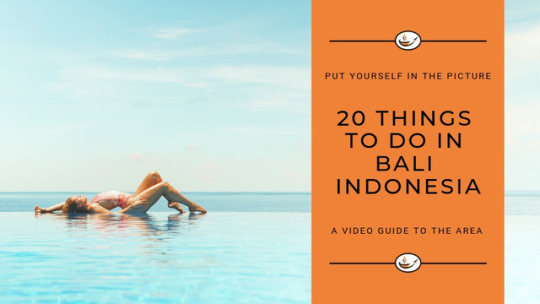
New Post has been published on https://vacationsoup.com/things-to-do-in-bali-indonesia/
20 Best Things to Do in Bali, Indonesia
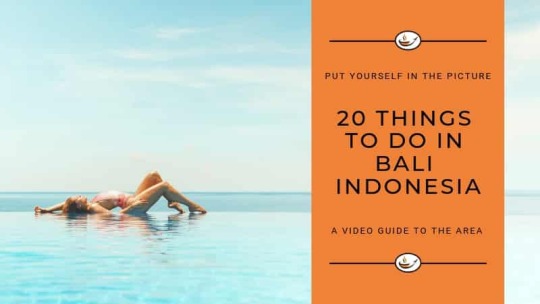
Bali is a little patch of paradise tucked in the heart of the Indonesian archipelago. It is one of the most coveted holiday destinations in Asia, and it’s pretty easy to see why: stunning beaches, a rich tapestry of different cultures, warm and hospitable people, beautiful temples and exotic palaces, mighty volcanoes, and verdant forests.
During the day there are a plethora of exciting activities to do, like surfing and snorkeling, or hiking. Night times in Bali, though, are a different story; as much as it teems with nature’s beauty, it also has a flair for dancing and nightlife. Suffice it to say, whatever your interests are, one could never run out of things to do in this Southeast Asian paradise.
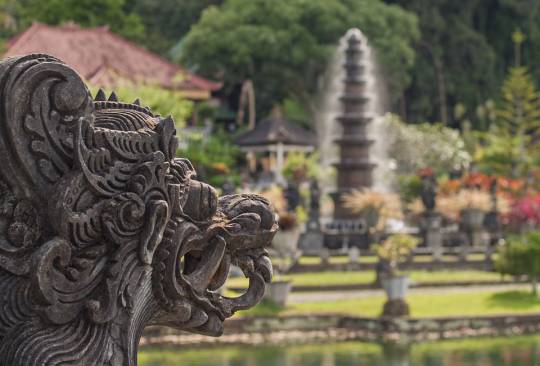
1. Free Things to Do in Bali, Indonesia
Climbing up Mt. Batur
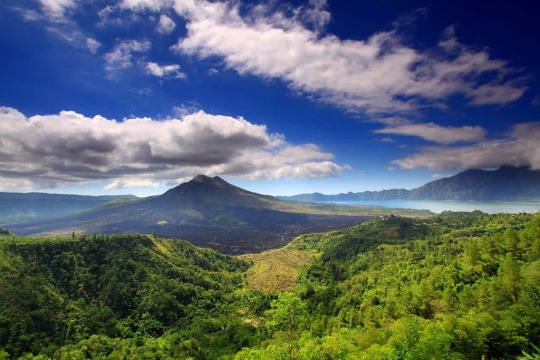
Mt. Batur
Bali is famous for its paradisaical beaches, but its mountains volcanoes are also a thing of splendor. Mt. Batur, one of the county’s most active volcanoes, is a favorite hiking spot in Bali. Towering at almost 1,717 meters, climbing Mt. Batur isn’t an easy feat, but seeing the sun rise at its peak is just absolutely glorious.
It is best to start the excursion two hours before sunrise to reach the summit just in as the sun is starting to rise. You need not worry about breakfast, too. Because Mt. Batur is an active volcano, you get to have a treat of eggs boiled on lava-heated rocks. After the two hours of hiking up the volcano, there is a hot spring nearby where you can take a dip to relax your sore muscles.
youtube
2. Free Things to See in Bali, Indonesia
Monkeys at the Sacred Monkey Forest Sanctuary

Going bananas over some banana
The Sacred Monkey Forest is a sacred Hindu site in Bali, but its population of primates is what attracts a lot of tourists to visit this place. The forest is home to more or less seven hundred long-tailed Macaques, and it is believed that the primates protect the area, as well as the three Hindu temples inside (Pura Dalem Agung, Pura Beji, and Pura Prajapati) from evil spirits. Bear in mind, though, that these monkeys are still in the wild so it is best to observe them from a safe distance. Nevertheless, the forest has other snap-worthy attractions like a verdant forest with over 186 tree and plant species and ancient temples.
youtube
3. Relaxing Things to See and Do in Bali, Indonesia
Tegalalang Rice Terraces

Rice is the staple food of most, if not all, Asian countries, hence it is not totally uncommon to see rice terraces in Asian countries like The Philippines, Vietnam, and Indonesia. One of Indonesia’s rice terraces in Bali, though, is one of the UNESCO World Heritage Sites. It features cascading Emerald-green rice fields that are laboriously tended for by Balinese farmers. This is best visited early in the morning or late in the afternoon when it’s not too hot. One does not need to actually do anything to appreciate this attraction; just breathe in fresh remote island air and marvel at the green beauty of the blooming rice shoots.
youtube
4. Breathtaking Things to See in Bali, Indonesia
Uluwatu Temple
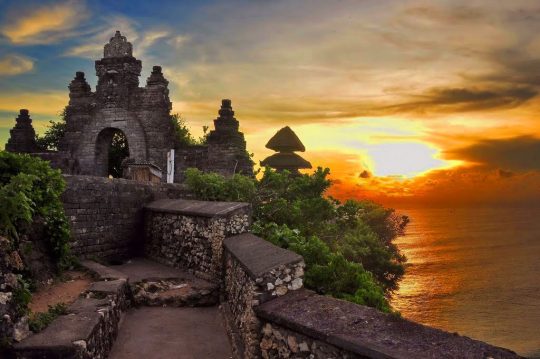
Uluwatu Temple
Uluwatu is an ancient temple that is perched at the top of the coastal cliffs just outside Kuta on Bali’s southwest tip. One of Bali, Indonesia’s most significant and most popular temples, Uluwatu features Ganesha statues that greets visitors who have come to be in awe of the panoramic seaside views, see the monkeys, or enjoy watching a traditional Balinese sunset dance.
The cliff top location makes it an ideal spot even for just sunset watching. There are quite a lot of available Uluwatu Temple day trips, but there are also night tours that include a sumptuous seafood feast at Jimbaran Beach.
youtube
5. Free Things to See and Do in Bali, Indonesia
Tegenungan Waterfall

Days in Bali, Indonesia can be hot, so taking a swim or a dip in Tegenungan Watefall is a welcome idea. The sight alone is impressive enough as the water cascades from black stone cliff 20 meters above and drops down into a quiet pool below.
Aside from that, the area also has some other attractions to offer: climbable cliffs, a charming smaller waterfall, a lovely grotto, and a number of food stalls make hanging out in Tegenungan Waterfull wonderful and convenient.
Keep in mind though, that there are certain restrictions when visiting the waterfalls, as per the safety protocol and cultural prohibitions in the area.
youtube
6. Precious Things to See in Bali, Indonesia
Celuk Village
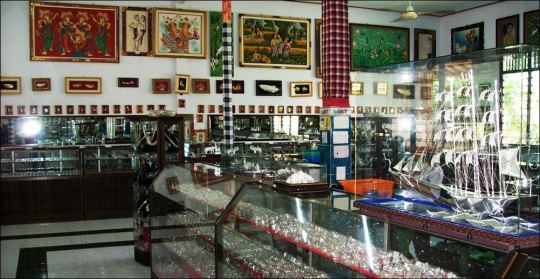
Celuk Village in Ubud is also known as the “silver village” because of their prolific jewelry production. There are a lot of artisans in Celuk Village that design and manufacture their silver and gold jewelry right in their homes and workshops, as they have for centuries. Visiting Celuk Village offers tourists a chance to watch artisans at work and directly buy jewelry from them.
It is possible to tour around the village without a guide but tourists prefer a bundled tour together with the other villages in Ubud. Guided tours usually include the batik village of Tohpati, carving village of Mas, and the crafting village of Batuan.
youtube
7. Relaxing Things to Do in Bali, Indonesia
Sanur Beach

The great island of Bali is peppered with ancient temples and ruins that seem to take you back in time, but did you know that even some of its beaches could give you that vintage feel too? How? Sanur Beach is one of Bali’s first beach resorts, and while technology and global advancements have updated the place a bit, it still has that old school laid-back vibe to it.
Visitors with families and middle-aged vacationers prefer this beach over other party-hearted beaches in Bali because Sanur is calmer and more peaceful—perfect for relaxing and soaking up the Sun and Bali’s local traditions and cuisine.
youtube
8. Beautiful Things to See in Bali, Indonesia
Pura Ulun Danu Bratan

Situated on the shores of Lake Bratan, near the town of Bedugul, Pura Ulun Danu is Bali’s most photographed temple. Similar with Taman Ayun Temple, it is a cluster of multi-roofed shines, so the reflection they cast on the water is just spectacular.
Pura Ulun Danu is accessible by canoe and was built in the 17th century. It measures over four thousand feet above sea level, and is the focus of the foggy Bedugul high terrains on the path to north Bali. There are several Pura Ulun Danu tours available that are bundled with other Balinese water temples, like Tanah Lot and Taman Ayun.
youtube
9. Cultural Things to Do in Bali, Indonesia
Goa Gajah

Goa Gajah is one of Bali’s holiest Hindu sites. It is a grotto with carvings of traditional Balinese mythological creatures. The visitor of Goa Gajah or Elephant Cave is uncertain, but it is assumed that Balinese priests dug it out by hand to be used as their hermitage.
The Goa Gajah is still an active Hindu worship site to this day and the Goa Gajah grotto is still a popular tourist spot in Bali. Tours here starts by entering the gaping mouth of a demon-like creature, and passes through a small chamber with carvings on the walls. Outside the cave entrance features several charming bathing pools in the courtyard.
youtube
10. Exciting Things to See in Bali, Indonesia
USS Liberty Shipwreck
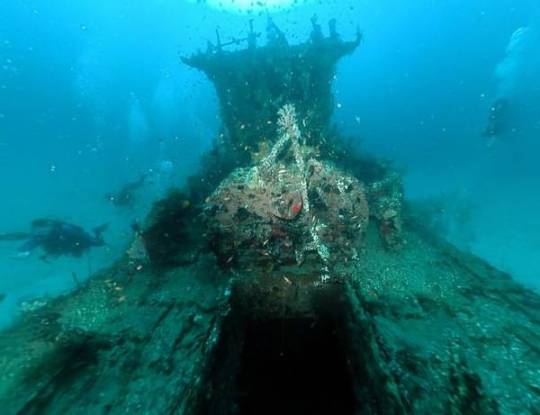
The USS Liberty Shipwreck sits quietly in its resting place just 25 meters from shore and five to thirty meters below sea level. Its position makes the USS Liberty one of the most accessible shipwrecks in the world. It is popular to a lot of novice shipwreck divers, but it is an interesting spot for seasoned divers, too. It is so accessible, that visitors can swim from the shore and arrive at the shipwreck site.
Several species of marine life made the USS Liberty their home and their presence along with military ruins make the shipwreck a beautifully haunting spot to take pictures.
youtube
11. Wild Things to Do in Bali, Indonesia
Wild Rapids at Telaga Waja

Bali is more than just an island with palm trees and romantic walks on spectacular beaches; it also has its wild and adventurous side that most people did not know much about. Visitors and tourists craving from some adrenaline high can get their fix at Telaga Waja with its roaring waters and fourteen kilometers of grade three and four rapids.
Tourists can expect verdant jungle scenery and a couple of hours of paddling like crazy, but what they don’t usually expect is a heart-stopping four meter high waterfall drop, a remarkable story, and bragging rights—if they make it through—once they are back on land.
youtube
12. Breathtaking Things to See in Bali, Indonesia
Devdan Show

The Devdan Show features a bit of Balinese culture and tradition that is a hit for both young and old visitors of the island. It features one and a half hour of Indonesian theatrical culture through the story of two young kids who wandered away from a tour group and came across a treasure chest filled with several items and stuff that take them, as well as the audience, to some of Indonesia’s most coveted islands. The show has a fusion of traditional and modern dances, acrobatics, colorful and meticulously-made costumes, and an interactive stage set-up that highlight Bali, Sumatra, Borneo, Java, and Papua islands.
youtube
13. Fascinating Things to See in Bali
Setia Darma House of Mask and Puppets

Masks and puppets are an important part of Indonesian arts and cultural heritage, so much so that they have an entire museum dedicated to their collection. Setia Darma House of Mask and Puppets is a one-of-a-kind museum that features and aims to preserve this facet of Indonesia’s culture and tradition. This museum houses a diverse collection of ceremonial masks and colorful puppets from all over the country and even from other countries.
The collection of over 1200 masks and 4700 puppets is displayed in a courtyard of renovated joglo, or Javanese wooden structures. The highlights of the museum include puppets used for Wayang Kulit, or shadow puppetry and the eye-catching Jero Luh mask, along with other masks used for topeng dances.
youtube
14. Family-friendly Things to Do in Bali, Indonesia
Bali Botanic Gardens

Bali is home to a plethora of fascinating and beautiful attractions that draw a lot of tourists annually. Nevertheless, it is also home to a few underrated attractions that could and should have made it to the list of Bali’s top destinations. One of those underrated places in Bali is situated in the heart of lakeside Bedugul. Bali Botanic Garden is located right smack dab in the middle of Bali’s cool highlands. It is a beautiful albeit underrated garden where plant lovers enjoy a lovely sight of orchids and endemic Balinese plants, as well as a number of begonias and carnivorous plants totaling to over 2400 species.
Families can also enjoy a thrill out of a zipline ride at Bali Treetop Adventure Park which is also within the garden/park.
youtube
15. Things to Do with Kids in Bali, Indonesia
Lovina
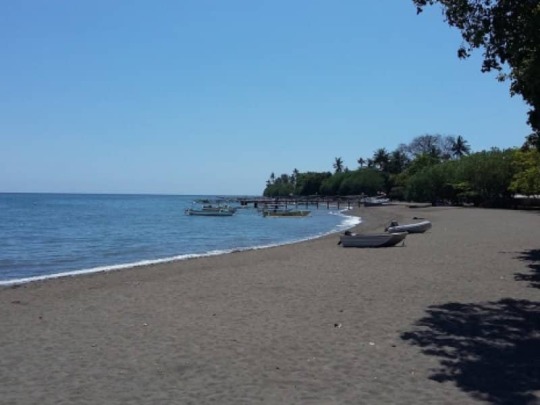
For visitors with families, Lovina is one of the most ideal spots in Bali to spend and enjoy family time in. Lovina is a mellower and more family-centered counterpart of the other buzzing resorts in Bali. Its amenities and packages are also more affordable.
The highlight and main feature of this resort is a sunrise-dolphin watching tour. Nevertheless, guests likewise enjoy basking in the sun on Lovina’s dark sand beaches, snorkeling on the coral reef near Menjangan island which is a couple of hours west, diving, and hiking in the hills outside of town, and exploring other coastal attractions the resort offers.
youtube
16. Delicious Things to Do in Bali, Indonesia
Casa Luna Cooking School
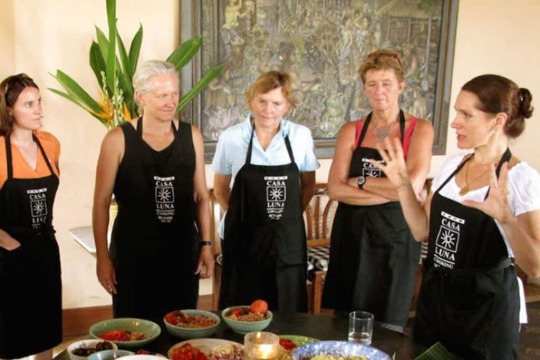
One of the many things that set Bali apart from other Indonesian islands is their distinctive cuisine. Balinese cuisine is actually one of the most intricate in the world. Casa Luna Cooking School offers a glimpse of Bali’s culture, traditions, and beliefs through food and cooking.
Classes at the Casa Luna Cooking School are held on the Second Honeymoon Guesthouse near Ubud. The relationship between food and Balinese society, culinary myths and the ceremonial and religious significance of food in Bali’s culture are among the topics that are also discussed in the classes. They also provide class notes and recipes for each participant to take home.
youtube
17. Free Things to See and Do in Bali, Indonesia
Tampak Siring
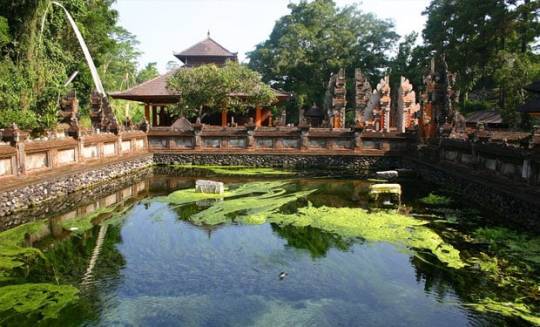
Tampak Siring is a lovely town in central Bali that’s famous for its recognized archaeological sites and breathtaking ancient temples. This former kingdom has been welcoming history enthusiasts and visitors to explore its majestic natural landscapes, sloping hills, verdant greeneries, and man-made architectural wonders.
Guests can also visit the iconic Tirta Empul temple and its natural pools that are built for sacred cleansing rites. Likewise, guests can explore the huge stone relics of Gunung Kawi. This town also houses one of the six presidential palaces. This palace, though, built for the 1950’s President Soekarno is a bit on the modern side, but it nonetheless offers a panoramic view of the nearby Tampaksiring Tirta Empul Temple and the stunning Mount Agung.
youtube
18. Relaxing Things to See and Do in Bali, Indonesia
Menjangan Island

If you’re one of the tourists who flee to Bali to escape the stresses brought upon by technology and the hustle and bustle of their daily routine, then Menjangan should be on top of your itinerary.
A few minutes off the Bali coast in West Bali National Park lies Menjangan Isand, a white-sand gem devoid of any modern day amenities and facilities beyond a simple bathroom and a handful of open-air cottages. Snorkelers and marine life lovers are still drawn to this island because of its pure reef walls veiled in roiling sea fans and soft corals.
There are equipment and gear available on guided tours, as well as a snorkeling operator.
youtube
19. Relaxing Things to Do in Bali, Indonesia
Banjar Hot Springs

It is an established fact that hot springs bring a string of benefits to our bodies. In the hills west of Lovina in Bali, Banjar Hot Springs brings more than that, as its structure is an attraction in its own right. The beautiful dragon-head fountains that supply water to pools that are surrounded by verdant tropical forests and lush palms add another layer of beauty to these hot springs.
There are lockers, a restaurant,, changing rooms, and a simple spa available for the convenience of its guests. Tours are not necessary, since it is fairly easy to book a private driver for the day, or you could just drive over the place from the adjacent Lovina.
youtube
20. Historical Things to See in Bali, Indonesia
Bajra Sandhi Monument
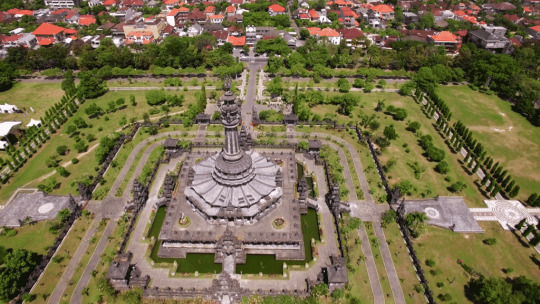
Bali is famous for the natural wonders it has been blessed with, but its man-made architectural beauties do not pale in comparison. One of their famous structures, the Bajra Sandhi monument situated in front of the Governor’s office in Denpasar, is also historically and culturally significant to the people of Bali. It is, a matter of fact, a cultural milestone for the local folks and a big draw for foreign visitors. On the second floor of the building, there is a sequence of dioramas showcasing the unique history of Bali, including several wars and other tribulations that burdened the island and its people throughout the centuries. Those dioramas start from the prehistoric times through the current economic, political, and social state of Bali.
youtube
Bali, too, has had a dark past which reflects poignantly on their culture and arts. Nevertheless, throughout the centuries, Bali has shown that it was, and still is, more than its pretty beaches and ubiquitous stunning temples; it has been also scarred by past tribulations, yet those scars made Bali even more beautiful and irresistible among locals and tourists alike.
Whether you are in for a bit of an adrenaline-pumping adventure or you just want to bask under the glorious Balinese sun, you are sure to be surprised to find more things in Bali that suit your fancy.
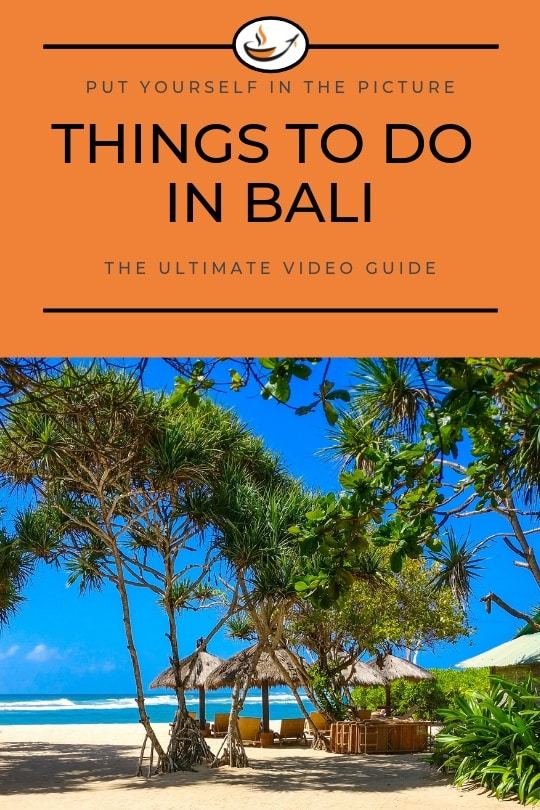
#Bali#Bali for couples#bali for first timers#bali with kids#things to do in bali#things to do in Bali in 2019
0 notes
Text
Ujung Kulon National Park: Indonesia’s Hidden Wilderness Gem
Ujung Kulon National Park: Indonesia’s Hidden Wilderness Gem
Tucked away at the western tip of Java Island lies Ujung Kulon National Park, a spectacular haven of biodiversity and natural beauty. This national park is a ujung kulon national park sanctuary for rare wildlife, a landscape shaped by ancient volcanic eruptions, and a paradise for adventurers looking to reconnect with the wild.
Spanning lush tropical forests, clear rivers, mangrove swamps, and serene coastlines, Ujung Kulon is one of Indonesia's most prized ecological treasures. It is a place where nature thrives in its most untouched form.
A Safe Haven for the Javan Rhino
Ujung Kulon National Park is Javan Rhino perhaps best known as the last refuge of the Javan rhinoceros, one of the rarest mammals on Earth. With an estimated population of fewer than one hundred individuals, these shy and solitary animals live exclusively in this protected forest. Their survival in Ujung Kulon symbolizes the importance of conservation efforts and the park's vital role in biodiversity preservation.
Though sightings of the rhino are incredibly rare, visitors are often struck by the knowledge that these creatures quietly roam the dense forests nearby, shielded from the outside world.
A Rich Ecosystem of Flora and Fauna
Beyond the Javan rhino, Ujung Kulon supports a rich variety of wildlife. The park is home to leopards, banteng (wild cattle), deer, macaques, crocodiles, monitor lizards, and over 270 species of birds. Its diverse habitats—from rainforest to marine ecosystems—make it an ideal location for both land and aquatic species.
The plant life is just as diverse, with thousands of species of trees, shrubs, and medicinal plants flourishing within the protected boundaries of the park.
Peucang Island and Marine Beauty
Just off the coast of Ujung Kulon lies Peucang Island, a favorite among visitors. With its soft white beaches, coral reefs, and crystal-clear waters, the island offers peaceful retreat and thrilling exploration. Wildlife on Peucang is bold and visible—monkeys swing from the trees, deer roam freely, and brightly colored fish dance through the reefs offshore.
Visitors can enjoy snorkeling, swimming, and hiking on the island, as well as observing animals in their natural habitat.
Adventure Through the Jungle
Ujung Kulon is a dream destination for adventurers and nature lovers. Trekking trails lead deep into dense jungle, along rivers, and past hidden waterfalls. Canoeing through mangroves, camping under the stars, and observing wildlife in silence are all part of the immersive experience.
For those interested in geology, the park also features remnants of the massive Krakatoa eruption of 1883, which reshaped the surrounding landscape and left a historical imprint on the region.
Cultural Significance and Human Connection
Though remote, the area around Ujung Kulon has been touched by human presence for centuries. There are traces of ancient villages, traditional fishing communities, and oral histories that speak of volcanic eruptions and ocean spirits. Local people still live in harmony with nature, using sustainable practices that help protect the fragile balance of the ecosystem.
0 notes
Photo




“Monkey Business”
Java macaque (Macaca fascicularis) (photos 1 & 2)
“King” the Western lowland gorilla (Gorilla gorilla gorilla) (photos 3 & 4)
Monkey Jungle
Miami, Florida
0 notes
Video
youtube
What is WALLACE LINE? What does WALLACE LINE mean? WALLACE LINE meaning - WALLACE LINE definition - WALLACE LINE explanation. Source: Wikipedia.org article, adapted under http://ift.tt/yjiNZw license. The Wallace Line or Wallace's Line is a faunal boundary line drawn in 1859 by the British naturalist Alfred Russel Wallace that separates the ecozones of Asia and Wallacea, a transitional zone between Asia and Australia. West of the line are found organisms related to Asiatic species; to the east, a mixture of species of Asian and Australian origin is present. Wallace noticed this clear division during his travels through the East Indies in the 19th century. The line runs through Indonesia, between Borneo and Sulawesi (Celebes), and through the Lombok Strait between Bali and Lombok. The distance between Bali and Lombok is small, about 35 kilometres (22 mi). The distributions of many bird species observe the line, since many birds do not cross even the smallest stretches of open ocean water. Some bats have distributions that cross the line, but other mammals are generally limited to one side or the other; an exception is the crab-eating macaque. Other groups of plants and animals show differing patterns, but the overall pattern is striking and reasonably consistent. Flora do not follow the Wallace Line to the same extent as fauna. Antonio Pigafetta had recorded the biological contrasts between the Philippines and the Maluku Islands (Spice Islands) (on opposite sides of the line) in 1521 during the continuation of the voyage of Ferdinand Magellan, after Magellan had been killed on Mactan. Moreover, as noted by Wallace himself, the observations in faunal differences between the two regions had already been made earlier by George Windsor Earl. In Earl's pamphlet On the Physical Geography of South-Eastern Asia and Australia, published in 1845, he described how shallow seas connected islands on the west (Sumatra, Java, etc.) with the Asian continent and with similar wildlife, and islands on the east such as New Guinea were connected to Australia and were characterised by the presence of marsupials. Wallace used his extensive travel in the region to propose a line to the east of Bali since "all the islands eastward of Borneo and Java formed part of an Australian or Pacific Continent, from which they were separated." The name 'Wallace's Line' was first used by Thomas Huxley in an 1868 paper to the Zoological Society of London, but showed the line to the west of the Philippines. Wallace's studies in Indonesia demonstrated the emerging theory of evolution, at about the same time as Joseph Dalton Hooker and Asa Gray published essays also supporting Darwin's hypothesis. Understanding of the biogeography of the region centers on the relationship of ancient sea levels to the continental shelves. Wallace's Line is visible geographically when the continental shelf contours are examined; it can be seen as a deep-water channel that marks the southeastern edge of the Sunda Shelf which links Borneo, Bali, Java, and Sumatra underwater to the mainland of southeastern Asia. Australia is likewise connected by the Sahul Shelf to New Guinea. The biogeographic boundary known as Lydekker's Line, which separates the eastern edge of Wallacea from the Australian region, has a similar origin to the Wallace line. During ice age glacial advances, when the ocean levels were up to 120 metres (390 ft) lower, both Asia and Australia were united with what are now islands on their respective continental shelves as continuous land masses, but the deep water between those two large continental shelf areas was, for over 50 million years, a barrier that kept the flora and fauna of Australia separated from those of Asia. Wallacea consists of islands that were not recently connected by dry land to either of the continental land masses, and thus were populated by organisms capable of crossing the straits between islands. "Weber's Line" runs through this transitional area (to the east of centre), at the tipping point between dominance by species of Asian against those of Australian origin. It can reasonably be concluded it was an ocean barrier preventing species migration because the physical aspects of the separated islands are very similar. Species found only on the Asian side include leaf monkeys and ponderous-beaked hornbills while Australian wallabies, spiny anteaters, tree kangaroos and gliding possums are not.
0 notes